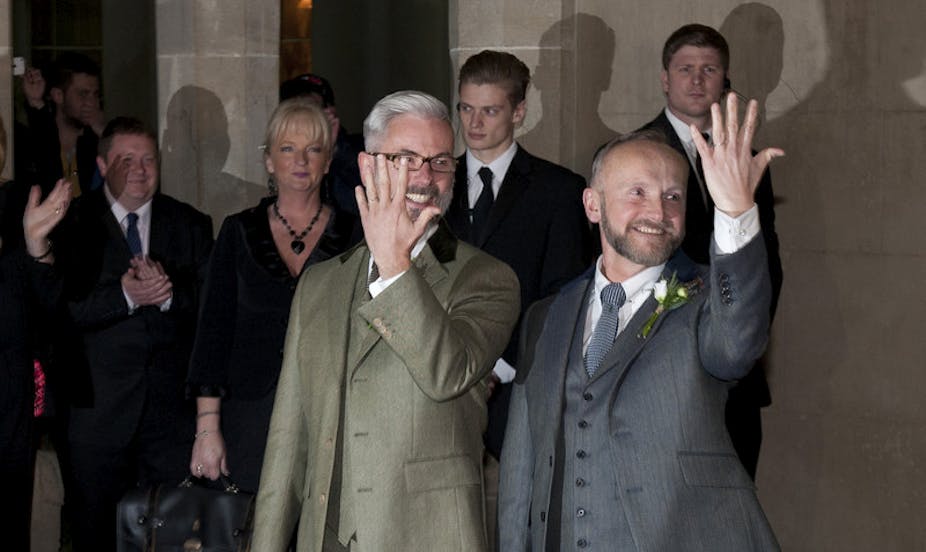The first statistics on same-sex marriages in England and Wales show a disappointing take-up in the three months since the right to marry was extended to lesbian and gay couples.
According to figures released by the Office for National Statistics, just 1,409 same-sex couples were married in England and Wales from the end of March to the end of June 2014. This is a relatively low number in comparison to the 7,000 or so couples across the UK who entered into civil partnerships in the same period of time after they were first made available in 2005.
More seismic statistics might have been expected, given the political storm that surrounded the 2013 act that sanctioned same-sex marriage and the impact it was predicted to have on society – apocalyptic or utopian, depending on your point of view.
So why have relatively few lesbian and gay couples decided to tie the knot this year? First, civil partnerships got there first and offer pretty much all of the rights and entitlements that go with marriage. A significant proportion of couples that might have chosen to get married are already in civil partnerships so many might not feel the need. They will also have the option of converting their civil partnerships to marriages from December 10 this year and it will be interesting to see how many take up this option. The figures on conversions to marriage are likely to give us a much better idea of how popular marriage will be for lesbian and gay couples, though we won’t have the full picture on this until next year.
Equally, the government’s decision to keep civil partnership as an option for same-sex couples alongside marriage means that some gay and lesbian couples are opting for civil partnerships rather than marriage, though again the statistics on this won’t be available for some time. Same-sex couples now enjoy an advantage over opposite-sex couples in that they can choose between marriage or civil partnership, whereas heterosexual couples can only choose between marriage or cohabitation as an option offering relatively few legal protections.
The government’s position on religious same-sex marriages may also have affected uptake. Those who see marriage as an expression of their religious faith are unlikely to be attracted to a purely civil ceremony. Similarly, there will be lesbian and gay couples who see marriage as an unattractive option that is grounded in outdated, even oppressive ideas around gender and sexuality. Some of these couples might prefer civil partnerships as an option. They might see it as a blank page, something they can invent for themselves that is free of the cultural and social baggage they associate with marriage.
It’s still a little early to say if same-sex marriage has turned out to be a damp squib. Longer term data on civil partnerships show that take-up has been much higher than initial forecasts, with over 60,000 partnerships formed since 2005. This demonstrates significant demand for the social and legal recognition available to lesbian and gay couples and points to a brighter future for same-sex marriage than these early statistics suggest.
The historical exclusion of same-sex couples from the social institution of marriage conveyed a powerful message about their low social status, marginalisation and exclusion. My research with lesbian and gay couples shows that the true impact of marriage and civil partnership is to be seen in the longer term, in the difference that these forms of recognition make to their daily lives.
As well as providing important legal rights, marriage and civil partnership provide opportunities for lesbian and gay couples to be acknowledged as a couple by family, friends and those around them. Irrespective of today’s statistics, marriage equality is an important policy development that we should all welcome.

